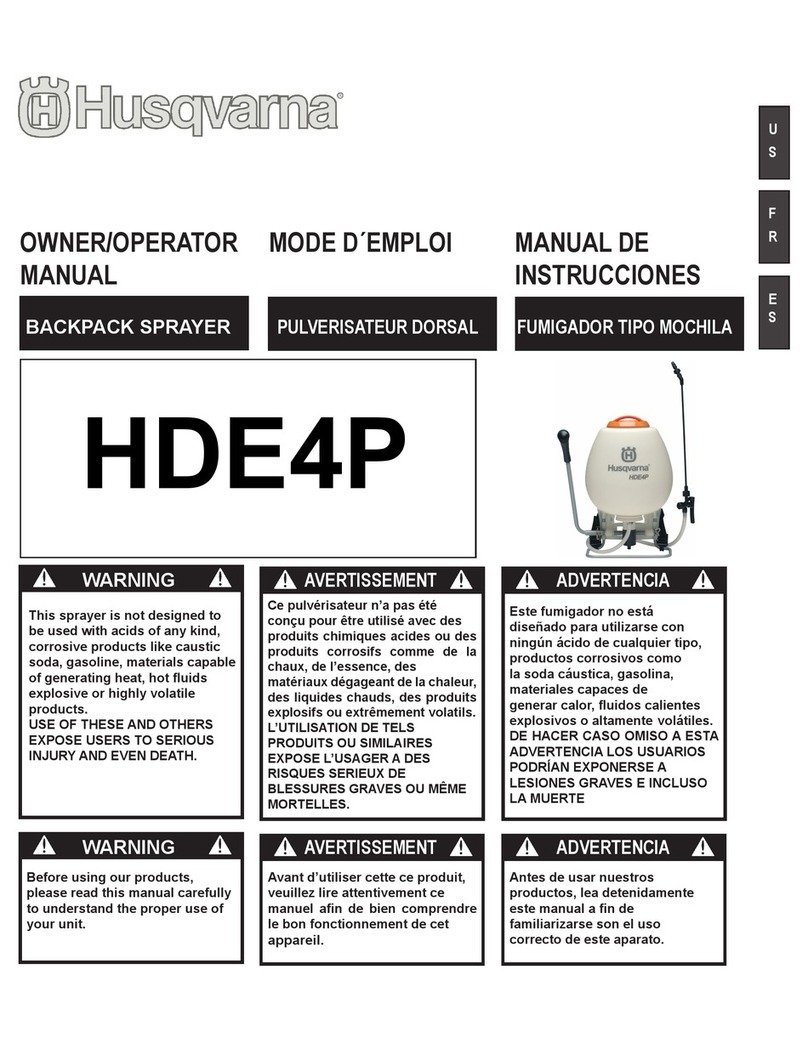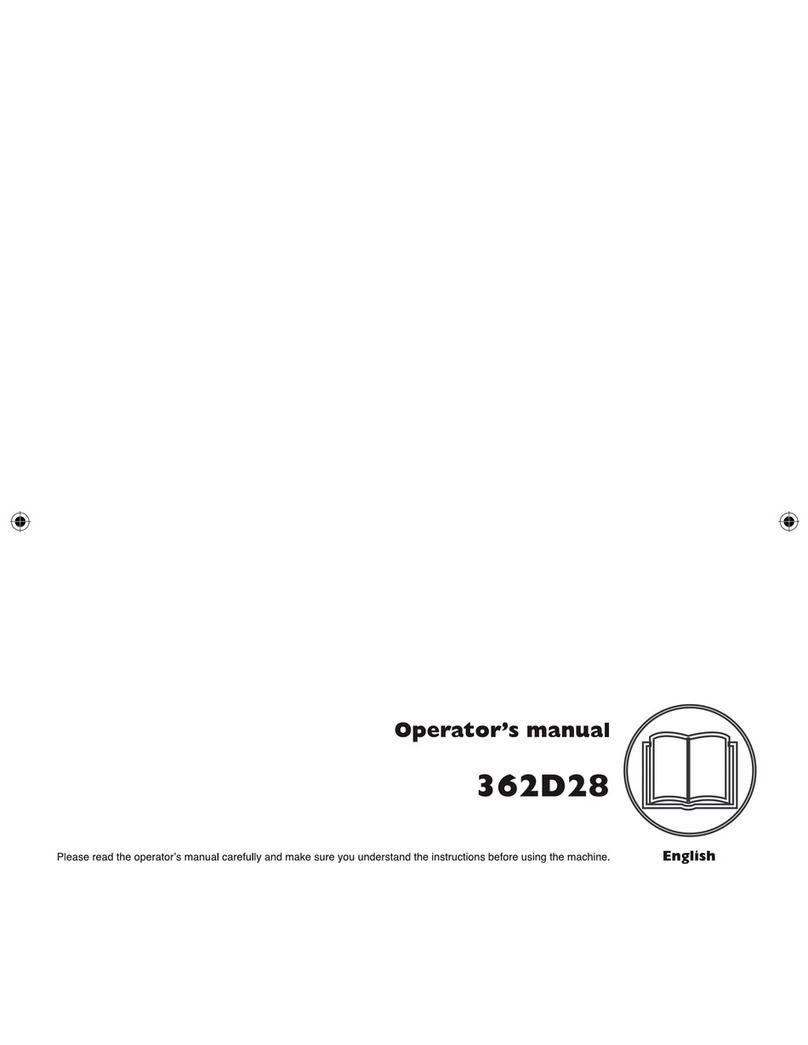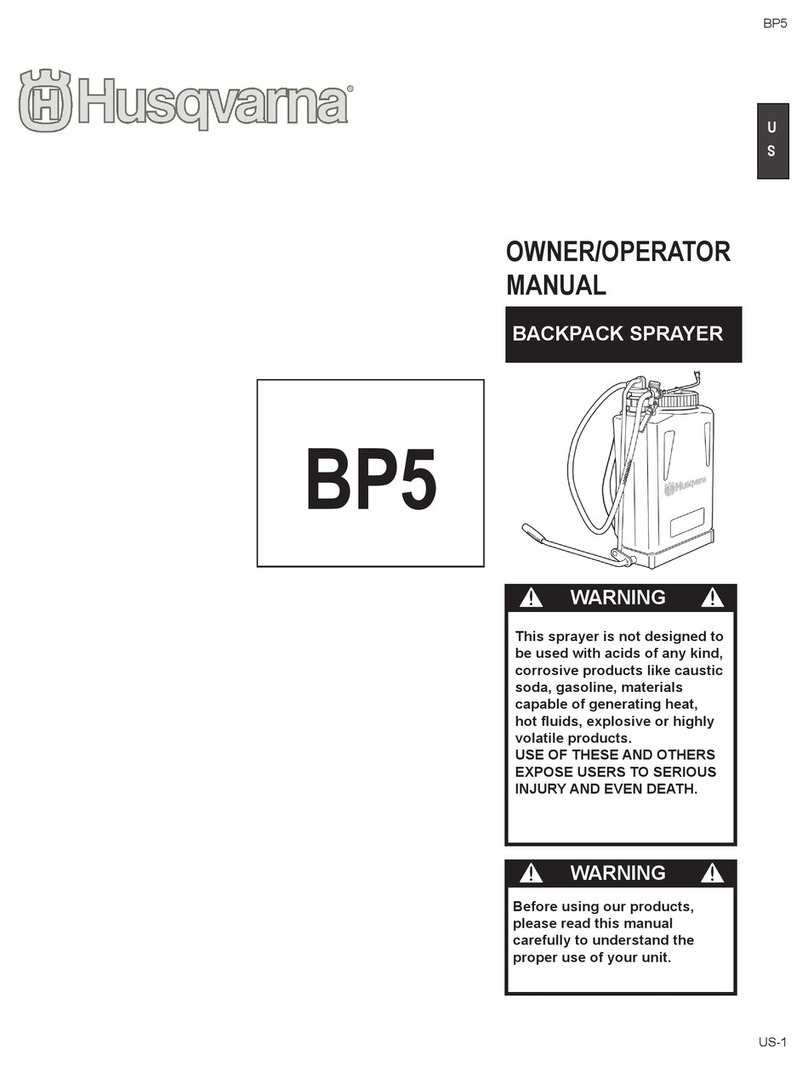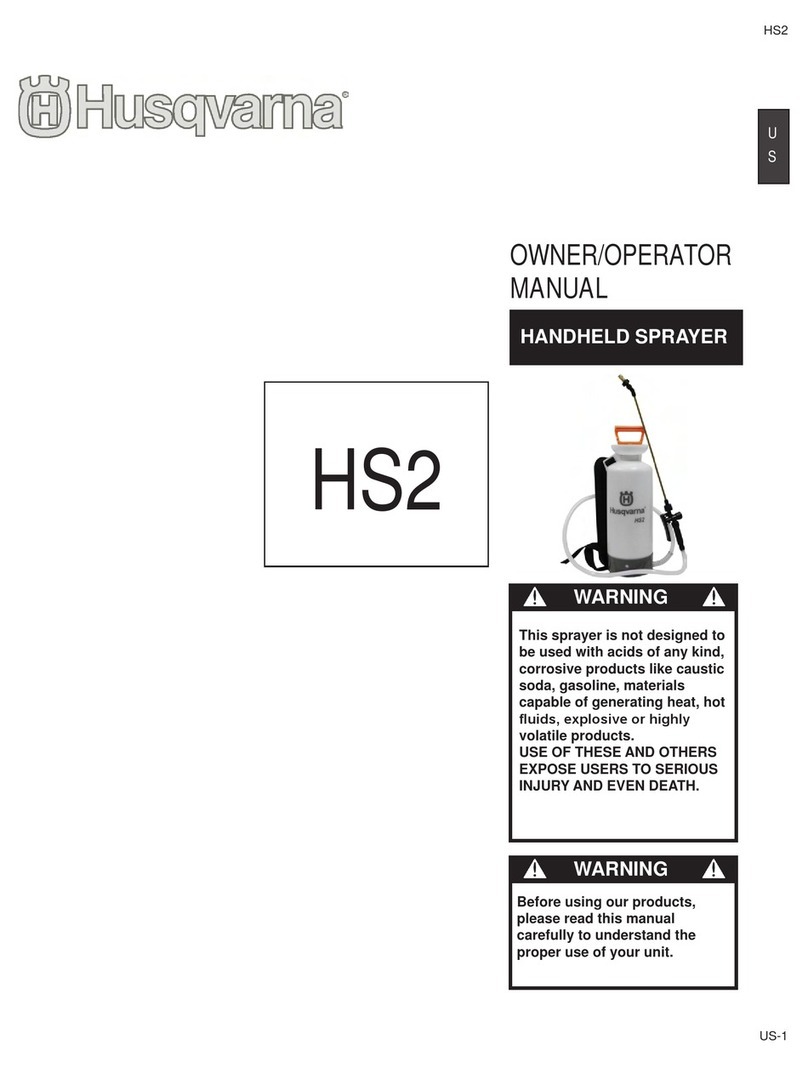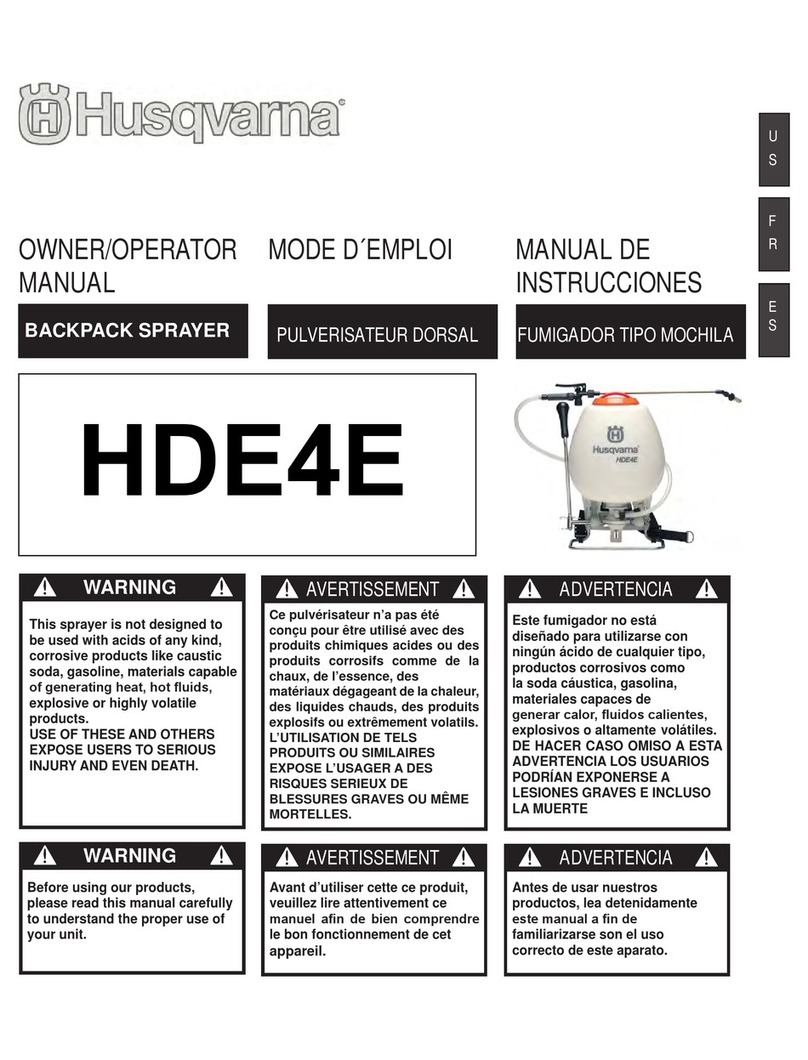
Safety instructions for operation
Chemical filling
• Make sure the product is fully assembled before
using it.
• Put the product on an even ground 3 m (10 ft) away
from the position where you filled the fuel tank
before starting the engine.
• The product can cause objects to eject, which can
cause damage to the eyes. Always use an
approved eye protection when you operate the
product.
• Be careful, a child can come near the product
without your knowledge during operation.
• Do not operate the product if there are persons in
the work area. Stop the product if a person goes
into the work area.
• Make sure that you are always in control of the
product.
• Do not use the product if you cannot receive aid in
case of an accident. Always make sure others
know you will operate the product before you start.
• Do not turn with the product before you make sure
that no persons or animals are in the safety area.
• Remove all unwanted materials from the work area
before you start.
• Do not use the product in bad weather like fog,
rain, strong winds, risk of lightning or other weather
conditions. Dangerous conditions such as slippery
surfaces can occur because of bad weather.
• Make sure that you can move freely and work in a
stable position.
• Make sure that you cannot fall when you use the
product. Do not tilt when you operate the product.
• Do not touch the bevel gear which is hot and can
cause injury after the engine stops.
• Stop the engine before you move the product.
• Chemical substances should be handled correctly,
or it can cause serious poisoning or even fatal
accidents. Always observing the warning symbols
on the container, since some chemicals are
extremely hazardous to humans and animals.
• Chemical substance containers should be stored
separately from other containers with obvious
warning symbols and out of the reach of children.
4
• Disconnect the spark plug cable before assembly,
storage or maintenance of the product.
• Do not use the product if it is changed from its
initial specification. Do not change any part of the
product without approval from the manufacturer.
Only use parts approved by the manufacturer.
Injury or death is a possible result of incorrect
maintenance.
• Do not breathe in the fumes from the engine.
Long-term inhalation of the engine exhaust fumes
is a health risk.
• Do not start the product indoors or near flammable
material. The exhaust fumes is hot and contain
spark which can start a fire. Not sufficient airflow
can cause injury or death because of asphyxiation
or carbon monoxide.
• When you use this product the engine makes an
electromagnetic field. The electromagnetic field
can cause damage to medical implants. Check
with your physician and medical implant
manufacturer before you use the product.
• Do not let a child or a person without knowledge of
the instructions operate the product.
• Make sure that you always monitor a person, with
decreased physical capacity or mental capacity,
that uses the product. A responsible adult must be
there at all times.
• Lock the product in an area that children and
unapproved persons cannot access.
• The product can eject objects and cause injuries.
Obey the safety instructions to decrease the risk of
injury or death.
• Do not leave the product when the engine is on.
• The operator of the product shall be responsible
for any accident occurs.
• Make sure that you are minimum 15 m (50 ft) away
from other persons or animals before you use the
product. Make sure that persons in the adjacent
area know that you will use the product.
• Refer to national or local laws. They can prevent or
decrease the operation of the product in some
conditions.
• Do not use the product if you are fatigued or
influenced by alcohol, drugs or medicine. They can
have effects on your vision, alertness, coordination
or judgment.
